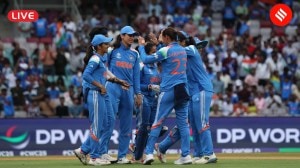Does your LMV licence allow you to drive a tractor as well? Supreme Court will decide
The centre in November 2023 assured the Supreme Court that it would evaluate on including tractors in the ambit of light motor vehicles, but did not revert to the court in nine months.
 A farmer preparing and ploughing the fields with tractor before planting paddy in Patiala. (Express File Photo - Harmeet Sodhi)
A farmer preparing and ploughing the fields with tractor before planting paddy in Patiala. (Express File Photo - Harmeet Sodhi)If you have a licence to drive a car, could you possibly use it to drive a tractor — or perhaps a road roller? Yes, said the Supreme Court seven years ago — and the court is now ready to pronounce its verdict on a challenge to that ruling.
On August 21, a Bench led by Chief Justice of India (CJI) D Y Chandrachud indicated that it is done waiting for the government to present its view on questions arising out of the challenge.
Nine months ago, on November 22, 2023, the Centre had informed the court that it would evaluate — and possibly recommend amendments to — Sections 2(21) and 10 of the Motor Vehicles Act, 1988 (MVA), which deal with the definition of “light motor vehicle” (LMV) and the “form and contents of licences to drive” respectively.
But the government has not got back to the court since then.
How the matter began
In 2017, the Supreme Court was tasked with deciding if a person who held a licence to drive an LMV was required to obtain a separate licence to drive a transport vehicle. (Mukund Dewangan v Oriental Insurance Company Limited).
Under Section 10 of the MVA, every driving licence must identify the “classes” of vehicles that the holder of the licence is allowed to drive. The section identifies “light motor vehicle” and “transport vehicle” as two distinct classes of vehicles (along with five other classes).
The court held that anyone with a licence to drive an LMV can also drive road-rollers, tractors, and “transport vehicles” (such as goods carriers or school/ college buses) so long as the “unladen” weight of the vehicle is up to 7,500 kg.
Unladen weight is the weight of the vehicle without the driver, passengers, or any other load. Under MVA Section 2(21), an LMV is defined as “a transport vehicle or omnibus the gross vehicle weight of either of which or a motor car or tractor or road-roller the unladen weight of any of which, does not exceed 7500 kilograms”.
The Bench of Justices Arun Mishra, Amitava Roy, and Sanjay Kishan Kaul (all now retired) noted that “transport vehicle” had been introduced as a class through a 1994 amendment to the MVA, replacing four older classes of passenger and goods vehicles that were classified as “medium” or “heavy”.
However, the separate class of “transport vehicles” would not apply to vehicles falling within the definition of LMV, as it would have “absurd results”, the Bench said.
“Every time an owner of a private car, who has a licence to drive a light motor vehicle, attaches a roof carrier to his car or a trailer to his car and carries goods thereon, the light motor vehicle would become a transport vehicle and the owner would be deemed to have no licence to drive that vehicle,” the court reasoned.
Challenge to the ruling
In July 2011, the Motor Accident Claims Tribunal ordered Bajaj Allianz General Insurance to pay Rs 5,02,800 as compensation to an applicant in an accident involving an autorickshaw.
On appeal, the Rajasthan High Court held in August 2017 that the insurance company must pay the compensation as the autorickshaw was a light motor vehicle and a transport vehicle. In its ruling, the HC referred to the SC’s decision in Mukund Dewangan.
Bajaj Allianz moved the SC in 2018, and argued that the decision in Mukund Dewangan had failed to consider multiple provisions under the MVA that show the differences in requirements for operating an LMV and a transport vehicle.
In March 2022, the court held that “certain provisions were not noticed by this Court in its decision in Mukund Dewangan”, and referred the case to a Constitution Bench.
Before Constitution Bench
After hearing arguments for two days in July 2023, the court asked the Union Ministry of Road Transport and Highways to present its position on the matter. Accordingly, Attorney General for India R Venkataramani appeared before the court on September 13, 2023, and argued that the Mukund Dewangan verdict “does not appear to be in accord with the legislative intent (of the MVA)”.
The AG also informed the court that the Centre was open to re-evaluating the legal position on the issue.
The court said “it would be appropriate if the entire matter is evaluated by the Government before this Court embarks upon the interpretative exercise”, and listed the case for hearing on November 22. On that date, the AG informed the court that the Ministry had begun consulting with stakeholders on amending the MVA. The court then directed the Centre to submit a “road map” for the amendments.
On April 16, 2024, the AG informed the court that a proposed amendment was ready but asked for the proceedings to be deferred until after the Lok Sabha election, so it could be placed before Parliament. However, when the case came up for hearing this month, the AG told the court that the amendment would be brought only in Parliament’s Winter Session (which commences in December).
However, CJI Chandrachud retires on November 10, and if the matter is postponed beyond that date, a new Bench will have to be constituted and arguments will have to be heard anew. To avoid this situation, the Bench decided to conclude hearings and close the issue.





- 01
- 02
- 03
- 04
- 05

































